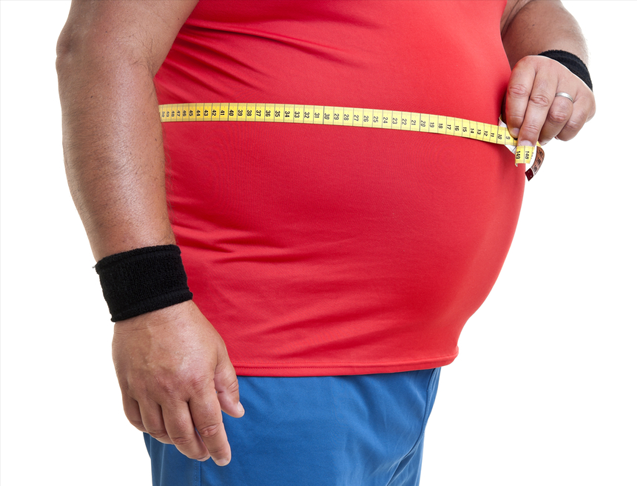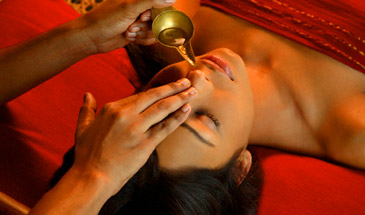Wondering How To Make Your Obesity Rock

Obesity means our body mass index BMI is more than 27. Excessive accumulation of fat in the body causes obesity. In a day we consume near about 1600-2000 calories and only 1000-1200 calories utilization done by yourself means near about 600-800 calories remain in the body. this leads to excess deposition of fat in the body and causes obesity.
Increased body fat put the person at risk of critical diseases like heart diseases, diabetes, kidney diseases, liver diseases arthritis and much more which leads to take treatment for obesity.
Ayurvedic View:-
Acharya Charak explained obesity in ”AsthniditAdhaya ” It is known as Medoroga. It is called by aggravation of Kapha.
Kapha is normal state provide nourishment to tissues through various microchannels, but when it is aggravated it leads to the production of toxins in the body. These toxins accumulate in channels and causing obstruction of channels.

In medoroga, the toxins accumulate in medovahstrotas and leading to increased production of medadhatu.
Hence if you want to treat obesity its first step is the purification of Kaphadosha and 2nd step is cleansing and medovah strotas (fat channels) through medicines and panchakarmas.
Pacification of Kapha doshas done by ”vaman”. Vaman means the elimination of doshas through vomiting. It is done by medicated decoction of madanphala and yastimadhu. After vaman 7 days ”Sansarjana Karma” means diet schedule followed by the patient which leads to the elimination of doshas and ulceration of agni means digestive power. Vaman also helps in cleansing of small channels.
After vamanvirechan should be done. It is for pitta dosha but the doshas which remain in body even after vaman should be removed by virechan therapy. It also causes cleansing of medovahstroas.
Panchakarma like vaman-virechana does not help in weight reduction it helps in “Reduction of fat”.
Fat reduction is more important than weight reduction. If you reduce fat then you can protect yourself from heart diseases, diabetes, arthritis, diabetes, and others.
Diet and lifestyle-

-Avoid high carbohydrates like potato, polished, rice.
- Increase intake of fruits and salads
- avoid oily and spicy foods drink of lukewarm water with lime
- Use of powdered cum seeds, coriander leaves salt and ginger powder with outer milk should be recommended.
Yoga-
Dhanurasana
Bhuyangasana
Ardhamasiendraysana
Trikonasana
Surya Namaskar
Helps in losing extra fat. This is more effective if performed with Pranayam and kapalbharti. Brisk walk of 30 min in morning helps in burning of excessive fat of the body.
OBESITY TREATMENT IN AYURVEDA

Pathya-Apathya for Obesity-
Pathyakarahar (Do’s)-
- Anna varga-PuranaShali(Old variety of Rice),Raktashali( Red variety of Rice)Shasthikashali(Rice harvested in 60 days),Yava(Barley),Chanaka(Chickpea) ,Kulatha(Horsegram)
- Jalavarga-ShrutaSheetaJala(LukeWarm Water)PanchkolashrutaJala(Water with Panchakola)Shunti siddha jala ( Ginger Water)
- Madhu(Honey)
- Madyavarga-PuranaSidhu( Old Wine)
- Mutravarga-Gomutra (Cow’s Urine)
- Kanda varga-Lasuna(Garlic) ,Ardraka ( Wet Ginger ) ,Sunthi ( Dry Ginger)
- Ksheeravarga- Takra ( Buttermilk)
- Shakavarga- Patola(Bottlegourd) ,Karavellaka ( Bitter gourd) ,Varthaka (Brinjal)Nimbapatra(Neem leaves) ,Shigru ( Drum Stick)
- Mamsavarga-JangalaMamsa (Forest meat)
- Regular exercise
- Yoga and pranayama
- Light food intake
- Most of the vegetables are good to reduce the formation of Kapha as well Ama, so it always consumed warm and along with some spices

ApathyaAhara and Vihar (Don’ts)
- Anna varga- Navanna (New variety of Rice)Sreeharsha.
- Masha (Black gram)
- Taila Oil
- Jalavarga-DushitaJala( Polluted water) SheetaJala ( Cold water)
- Madyavarga-NutanaMadya(New Wine)
- Kanda varga- Aluka (Potato)
- Ksheeravarga–Dadhi( Curd),Ksheera (Apakva) Milk
- Guda(Jaggery)
- Mamsavarga-AnupaMamsa(Marshyland Animal meat)
- Diwaswap (Day sleeping)
- Ratrijagaran(Night awaking)
- Aalasya
- Avoid Ahara having Guru Snigdha, Ati Drava, Picchila and AbhishyandiGunatmaka
- Excess consumption of food is called as AthiMatraAharaSevana. So it is avoided .
- Avoid excessive water intake after consuming food as it slow down the process of digestion.
- Dairy products, oily food items, salty and sour food articles should be avoided.
This treatment helps mobilize the accumulated fat resulting in weight loss; Ayurvedic remedies for weight loss, home remedies and specific diet programs prevent further accumulation of fat in the body.
TINNITUS AND AYURVEDA

In absence of external sound there is continueous perception of unnatural sound like hissing, whistling,buzzing,ringing,swishing,chirping in one or both ears or in the head is called as tinnitus.
In Ayurveda it is called as “Karnanaad”. Karna means ear and Naad means sound.generally this condition remains for short period of time but some time it remains persistent.If it persist for longer then it hampered day to day activity of a person.
Tinnitus Causes
The exact cause still not known
Exposure to loud noises
Wax build-up in the ear canal
sinus infections –
Any Infection of Ear Cannal
4· Jaw misalignment –
5· Cardiovascular disease –
Like Hypertention,ventricular hypertrophy leads to symptoms of tinnitus
6· Tumour of brain,vestibule,auditory cannal
Excess use of headphones
Trauma to the ear,head or neck
Some medications like .- aspirin, quinine and some antibiotics.

Ayurvedic Perception
According to Ayurveda it is caused by pran vayu disturbance.
Causes of Tinnitus
lack of adequate sleep,
Worries and stress,
excess fasting,
excess exercise,
sudden shock/grief/fear,
excess intake of bitter medicines/vegetables etc
excess indulgence in sex
Excess cold water head bath
Improper Nasya therapy
Panduroga
Pathogenesis-
Accordind to Sushruta ,when vitiated vayu goes in to body parts through circulation ,it get located in sound carrying channels,which leads to improper or faulty perception of sound, that time patient perceives various types of sound;this disease is known as pranada or Karnanada(ringing in the ears).
According to Ayurveda vata dosha is responsible for all body activities like circulation, digestive ,sensory movement etc. Due to vataprakopak ahar-vihar, vata gets vitiated which cause disturbance in all the body functions of movements. This leads to pressure in the head , nervous system, dryness in the senses, tinnitus, loss of sleep, dry scalp, dry skin , tendency of unstability, anxiousness, nervousness etc.
Complications:
Karnabadhirya- hearing loss
hyperacusis
Depression,
Panchakarma for Tinnitus
Nasya: Administration of oil through nasal canal is called as Nasya.
Nasya of Vacha tail (Acorus calamus) helps in calming and balancing of the Prana vayu.
While nasya of bala tail or kseerbala tail provide strength to the nerves of ear and brain
Abhyanga :(Massage) Shiroabhyanga(head massage) and padabhyanga(Foot massage), wherein the soles of the feet are massaged with warm sesame oil, has a specific effect in calming the prana vayu. At bedtime, warm sesame oil should be applied to the soles of the feet and also to the scalp. This treatment rapidly normalizes the prana vayu.
Karnapooran:-Administration of oil through ear canal. For balancing the vata dosha,10 drops of til tail administration in ear canal is nessasary The oil is allowed to remain in the first ear for five or ten minutes, then that ear is cleaned, and the same procedure is followed with the other ear, with the patient lying on the other side. Oils used for this purpose are .Bilwadi tail,Apamargkshar tail,Dashmool tail
Kawala & Gandush:Gargling of medicated oils or certain liquids/Kwath is Kawala.It strengthens the nerves of eyes and ears .
It pacifies aggravated vata.
Gandush is Withholding medicated oils or certain liquids in the mouth for a certain period of time
Ayurvedic Herbs
Ashwagandha Ghana,Ashwagandharistham
Jatamansi ghan
Dashmool ghan,
Sarivadi Vati
Yograj guggul
Bruhat vata chintamani rasa
Suvarnayukta Brahmi vati
Saraswatarishtam
Drinking a cup of fenugreek seed tea each morning, noon, and night is reported to abolish disturbing ear noises.
To alleviate this root cause-aggravation of vata in the nervous system-prepare a tea made from equal amounts of comfrey, cinnamon, and chamomile. Steep up to 1 teaspoon of this mixture per cup, and drink 2 or 3 times a day.
Lifestyle Changes for Tinnitus management
– Use hair oil daily
– Use oil massage using Sesame oil or Mahanarayan Tailam for about 20 minutes to whole body and take hot water bath thereafter. The massage and bath just before bedtime will aid the sleep also.Oil massage calms down the Vata. Skin is an important seat of Vata, since it is widely distributed over the body.
– Observe silence for a few days and note the change in ringing.
– Tinnitus appears to have some connection with the number of hours one spends daily in front of computer monitor. The radiation emitted by monitor is hitting the user all the time. A number of cases having auditory or vision nerve problems are coming to light.
– Do not travel or walk in an extreme cold climate. Do not take bath frequently.
– Do not stop natural urges when body wants to eliminate the wastes.
– To increase blood circulation, rub by a mud soap at bath time also gives the effect of massage. In addition, it cleanses the blood to some extent.
– In addition, there are certain breathing techniques invented by Guru Padmasambhava two thousand years ago, which have to be learnt in presence of Guru. These are known to help in most of vatic ailments affecting the body.
– Peace of mind and Vata vitiation are inversely proportional. In fact Vata dosha unbalance causes a vascillation and constantly thinking mind. Hence, in case of all Vata disorders meditation appears to help.
– excess television watching, excess use of computers, or sleeping near an electrical outlet should be avoided.
– Moderation in sensory activities.especially ear sense -avoid too much exposure to loud noises, music, speakers, and professional activities which involve high frequency sounds.
Lifestyle adjustments are thus an essential part of the effective treatment of tinnitus.
PSEUDO GOUT TREATMENT

About Pseudo Gout: Ayurvedic Treatment Of Pseudo Gout At Central India
Pseudogout is a form of arthritis characterized by sudden, painful swelling in one or more of the joints. These episodes can last for days or weeks. The most commonly affected joint is the knee.Also called Calcium Pyrophosphate Deposition Diseases, the common term “pseudogout” was coined for the conditions similarly to gout. Both conditions are caused by crystal deposits within joints, although the type of crystal differs for each condition.
It isn’t clear why crystals form in the joints and cause pseudogout, but the risk increases with age.
Treatments can help relieve pain and reduce inflammation.
While the cause of rheumatoid arthritis is not clear, it is believed to involve a combination of genetic and environmental factors. The underlying mechanism involves the body’s immune system attacking the joints. This results in inflammation and thickening of the joint capsule. It also affects the underlying bone and cartilage.The diagnosis is made mostly on the basis of a person’s signs and symptoms.

Causes Pseudogout: Ayurvedic Treatment Of Pseudo Gout At Central India
Pseudogout results from the abnormal formation of calcium pyrophosphate (CPP) crystals in the cartilage (cushioning material between the bones), which is later followed by the release of crystals into the joint fluid. When CPP crystals are released into the joint, they can cause a sudden attack of arthritis, similar to gout.
The cause of abnormal deposits of CPP crystals in cartilage is unknown. They may form due to abnormal cells in the cartilage, or they may be produced as the result of another disease that damages cartilage. CPP crystals may be released from cartilage during a sudden illness, joint injury, or surgery. The abnormal formation of CPP crystals also may be a hereditary trait.
Signs and symptoms: Ayurvedic Treatment Of Pseudo Gout At Central India
The symptoms of pseudogout are similar to those of other diseases, especially gout, which is caused by a buildup of uric acid. They also mimic those of rheumatoid arthritis or osteoarthritis.
Symptoms include:
1.Swollen
2.Warm
3.Severely Painful

Ayurvedic Treatment Of Pseudo Gout At Central India
Vatapitta Samanam
Ayurvedic Medicines For Pseudo Gout
Guduchyadi Kashayam + Kokilaksha Kashayam – 60ml bd
Guduchyadi Kashayam:
Guduchyadi Kashayam is an Ayurvedic medicine in water decoction form. It is used in the treatment of fever with burning sensation, vomiting etc.
Ingredients:
10 g coarse powder of each of
Guduchi – Indian Tinospora (stem) – Tinospora cardi folia
Dhanyaka – Coriander – Coriandrum sativum
Nimba – Neem – Azadirachta indica
Raktachandana – Pterocarpus santalinus
Padmaka – Wild Himalayan Cherry – Prunus cerasoides
All the ingredients are added to 16 parts of water, boiled and reduced to 1/4th part, filtered and used.
Reference: Sharangdhara Samhita Madhyamakhanda 2/8, Astanga Hridayam
Kokilaksha Kashayam:
Kokilaksha Kashayam is an Ayurvedic medicine used in treating jaundice, anemia and hepatic conditions. It is in herbal decoction form. This medicine is based on Kerala Ayurveda principle. It is also available in Kashayam tablet form.
Kokilaksha kashaya benefits:
- It is used in treating Rheumatoid arthritis
- It is also effective in Gout and other types of arthritis.
- It helps to relieve joint pain, inflammation.
- It boosts immunity.
Kokilaksha kashayam ingredients:
Herbal decoction is prepared from 10 grams of each of
Kokilaksha – Asteracantha longifolia
Amrutha – Tinospora cordifolia
Kaishore Guggulu – 2 tablets two times a day
Kaishore Guggulu is one of the very famous Ayurvedic herbal product. It acts as – aging skin health promoter, joint health, natural blood cleanser, useful as a supportive dietary herbal supplement in many health conditions such as diabetes, skin diseases etc.
Dosage: 2 tablets two times a day
Madhuyashtyadi Thailam (Oil) – External Application
Madhuyashtyadi Thailam (Oil) is an ayurvedic formulation. This is a polyherbal medicine, known to contain fruitful effective herbs. This formulation is used to provide relief in joint problems and related conditions.
Ingredients of Madhuyashtyadi Thailam (Oil)
- Sthira (Desmodium Gangeticum)
- Tamalaki (Phyllanthus Niruri)
- Durva (Cynodon Dactylon)
- Payasa (Pueraria tuberosa)
- Abhiru (Asparagus Racemosus)
- Candana (Santalum Album)
- Loha (Aquilaria Agallocha)
- Hamsapadi (Adiantum Lunulatum)
- Mamsi (Nardostachys Jatamansi)
- Meda (Polygonatum Cirrhifolium)
- Mahameda (Polygonatum cirrhifolium)
- Madhu parni (Tinospora Cordifolia)
- Kakoli (Lilium Polyphyllum)
- Ksira kakoli
- Satapushpa (Anethum Sowa)
- Rddhi (Dioscoria Bulbifera)
- Padmaka (Prunus Cerasoides)
- Jivaka (Microstylis Muscifera)
- Rsabha (Microstylis Wallichii)
- Jivanti (Leptadenia Reticulata)
- Tvak (Cinnamomum Zeylanicum)
- Patra (Cinnamomum Tamala)
- Nakha (Capparis Sepiaria)
- Balaka Hrivera (Coleus Vettiveroides)
- Prapaundarika (Rubia Cordifolia)
- Manjistha (Rubia cordifolia)
- Sariva Indian (Sarsaparilla)
- Indra varuni (Cucumis Trigonus)
- Dhanyaka (Coriandrum Sativum)
Dosage: External Application
Kalyanagulam – 2 teaspoons at bedtime
Kalyanagulam is an effective Ayurvedic medicine for skin, liver and digestive conditions. It is in herbal jam form. It is also known as Kalyanagudam.
Kalyanagulam Benefits:
- This is good for purging at all times and is harmless.
- It is used in the treatment of skin diseases, jaundice, diabetes, fatty liver changes.
- Bloating, ascites, fistula, digestive problems, and anemia.
- Corrects seminal disorders.
Kalyanagulam Ingredients:
12 grams of each of
Vidanga – Embelia Ribes
Pippali and Pippalimoola – Fruit and root of long pepper – Piper longum
Triphala – Terminalia chebula, Terminalia bellirica and Amla (Emblica officinalis)
Dhanyaka – Coriander – Coriandrum sativum
Chitraka – Leadwort – Plumbago zeylanica
Maricha – Pepper – Piper nigrum
Hastipippali – Scindapsus officinalis
Dipyaka – Trachyspermum ammi
Panchalavana – 5 salts – Vida, Saindhava, Romaka, Samudra Souvarchala Lavana
Reference: Ashtangahrudayam Kalpasthana 2/17-20
Dosage: 2 teaspoons at bedtime
LIVER CIRRHOSIS
This is the condition in which fibrosis of liver occur which cause permanent damage of liver. Liver cirrhosis is many times compared with Kumbhakaamla described in Ayurveda. It generally occurs as a complication of liver disease.
In this condition liver becomes nodular atrophic with coarse echo
texture. The size of liver becomes reduced or Shrunken .Due to which liver was unable to perform its normal functions .
Functions of Liver- Helps in metabolism process nm
control infections
remove bacteria and toxins from the blood
process nutrients, hormones, and drugs
make proteins that regulate blood clotting
produce bile to help absorb fats including cholesterol and fat-solueble vitamins
Causes
Alcoholism
hepatitis B and C
fatty liver disease
Obesity
Nonalcoholic fatty liver disease
Autoimmune hepatitis
Diseases that damage or destroy bile ducts like biliary atresia
Inherited diseases – Cystic fibrosis, Wilson disease, galactosemia,
Drugs, toxins, and infections – drug reactions, prolonged exposure to toxic chemicals, parasitic infections
Symptoms:
Loss of appetite
Fatigue
Nausea, vomiting
Sudden weight loss or gain
Yellowing of skin or the whites of eyes (jaundice)
Itching all over skin
Edema over ankles, legs, and abdomen (often an early sign)
abdominal pain and bloating
spiderlike blood vessels on the skin
yellowish coloured urine
Blood in the stool
Fever
Kumbha Kamala is the classical description if cirrhosis of liver in Ayurveda.
“|| Kaalantarath khareebhutah kruchrasyaat khumba kamala ||”
When kamala or jaundice or hepatitis was untreated the it will cause the disease called asKumbhkamala.It , produces dryness or roughness to the Liver (kharathva or rookshatva).
Shodana chikitsa done with panchkarma therapies
Shamana chikitsa done with the help of ayurvedic medicines
Rasayana chikitsa.
Medicines-
Dadimadya ghruta
Katukadya ghrut
Pathy ghruta
Arogyavardhini vati,
Triphala churna
Katuki churna
Kalamegha churna
Drakshadi kashayam
Guluchyadi kashayam
Mixcture of GuduchiYashtimadhuAmalaki churna
DIARRHEA AND AYURVEDA
In Ayurveda it is called as Atisaar. It is a disease of digestive system. It is a very common problem which occurs to any age of life.
In this condition the stool become too watery resulting in dehydration of body. Normally, the condition lasts for 2-3 days and can be managed without medicines. But if it is remains more than 3 days it leads to severe dehydration of body.
If this Diarrhea become untreated the it cause Crohn’s disease, ulcerative colitis, celiac disease, microscopic colitis and irritable bowel syndrome (IBS).
Causes
· Drinking of contamined water
· Eating of contaminated food
· bacteria, viruses or parasites infection
· – Use of some antibiotics which cause diarrhea.
· Lactose intolerance .
Symptoms
· watery motions more than 4 t-5 times
· Abdomianal cramps
· Less urine
· Sometime Bleeding with stools
· Burning in anal region
· Low BP
Ayurvedic Diarrhea Treatment
According to Ayurveda, weak gastric fire, improper food, impure water, toxins and mental stress usually cause atisaar. Aggravatede vata pulls down the fluid part from various tissues of the body and brings it into the intestine. There this fluid mixes with the stool which then leads to loose, watery motions. Depending upon which particular Dosha is vitiated, atisaar has been classified into Vataj, Pittaj, Kaphaj, Sannipatik, Bhayaj and Shokaj types in Ayurveda. Vataj atisaar (caused mainly by vitiated Vayu) is marked by painful loose motions with sounds & foam, gases and cramps.
Pittaj atisaar (caused mainly by vitiated Pitta) causes motions with burning sensation at anus, offensive odour and varying colours like green, red, blue. Thirst, giddiness, sweating and fever are often present. Kaphaj atisaar (caused mainly by vitiated Kapha) shows sticky, oily, whitish motions with foul odour, nausea, lazy feeling and excess sleep. Sannipatik atisaar is caused by vitiation of all three Doshas and therefore have mixed characteristics. Bhayaj and Shokaj atisaar are caused by fear and grief respectively.